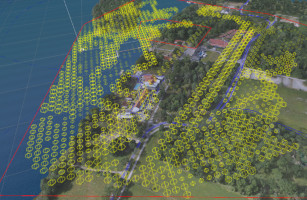Human-Swarm Interaction Demo
June 24, 2024

In a well attended demo and discussion session, GEISTT recently delivered a concept development project addressing challenges and opportunities of Human-Swarm Interaction. The project was performed under a contract from the Swedish Defence Materiel Administration (Försvarets Materielverk, FMV) as a part of the Swedish Armed Forces R&D (FoT) process in the Military Innovation Program (MIP, Militärt Innovationsprogram).
The applied research questions addressed in the project targeted information and interaction requirements for a human operator (or a small team of operators) controlling a swarm of “many” cooperating and self-synchronizing drones/UAS platforms. “Many drones” was stipulated to be at least 20+, however the project developed a human machine interaction (HMI) concept enabling a larger swarm of at least up to a hundred highly automated or so-called autonomous drones.
In order to contextualize and analyse the HMI concept, a drone simulation environment developed by Inhumate and the associated software suite of simulation support tools was used to create a rich, representative environment and realistic, dynamic scenarios.
The final HMI concept of the project encompasses several different control principles with delegation-based plays (strategic control), control by changing parameters in the swarm intelligence algorithms (parametric control), control through the setting of environmental constraints (environmental control), more direct leader/follower control (associative control), as well as combinations thereof. These variations and combinations of control principles serve different control needs, and can or need to be applied differently depending on aspects such as mission phase, operational constraints and CONOPS (Concept of Operations), for example.

Drone Swarm Simulation